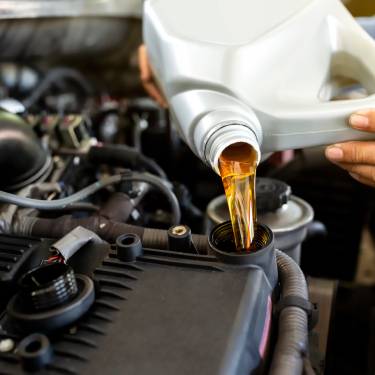
Regular oil changes are one of the most essential aspects of maintaining your car. Oil keeps your engine running smoothly by reducing friction, preventing overheating, and keeping internal components clean. Ignoring oil changes can cause long-term damage, higher operational costs, and even engine failure. Here are the top signs your car is ready for an oil change, if it wasn’t already obvious.
Dark, Dirty Oil
Clean oil is amber in color and has a smooth consistency, but over time, it becomes contaminated with dirt, debris, and other particles. To check, simply pull out the dipstick and observe the color and clarity of the oil. If it’s dark and gritty, it’s time for a change. Dirty oil loses its efficiency and eventually increases the risk of wear and tear on your engine.
Engine Knocking or Unusual Noises
If your engine starts making strange knocking or rumbling sounds, don’t ignore it. Fresh oil ensures that all moving parts in the engine are properly lubricated.
Over time, old oil loses its ability to reduce friction, causing metal components to grind against one another. This lack of lubrication can lead to increased engine noise and, if left unchecked, significant engine damage.
Decreased Fuel Efficiency
Have you noticed that you’re making more trips to the gas station recently? Old, degraded oil can affect your engine’s performance, forcing it to work harder and burn more fuel.
Reduced gas mileage is a clear signal that it’s time to change your oil. By replacing old oil, you’ll improve engine efficiency and save money on fuel in the long run.
Dashboard Warning Lights
If your dashboard’s oil change indicator or check engine light comes on, don’t ignore it. Modern cars have sensors that detect low oil levels or an overdue oil change.
While warning lights can sometimes indicate other issues, they’re often tied directly to your car’s oil system. Pay attention to these signals; they’re telling you it’s time to give your engine the care it needs.
The Role of Oil in Maintaining Your Engine
Oil viscosity also plays a critical role in engine performance. Viscosity refers to the oil’s thickness, and over time, it can break down due to heat and engine pressure.
Oil that’s too thin won’t lubricate effectively, while oil that has thickened can cause excessive friction. Either way, compromised oil viscosity means your engine won’t function at its best and could lead to long-term damage.
Excessive Mileage Since Your Last Oil Change
Every car has a recommended mileage interval for oil changes, often anywhere from 3,000 to 7,500 miles, depending on the type of oil and manufacturer suggestions. If you’ve driven beyond this range without an oil change, it’s definitely time to schedule one. Even if your car seems to be running fine, sticking to these guidelines is vital to prevent bigger problems down the line.
Paying close attention to the signs that your car needs an oil change will keep it in peak condition, offering reliable performance for years to come. Let this checklist be the nudge you need to get your car serviced.
Bio: Casey is a passionate copyeditor highly motivated to provide compelling SEO content in the digital marketing space. Her expertise includes a vast range of industries from highly technical, consumer, and lifestyle-based, with an emphasis on attention to detail and readability.




















